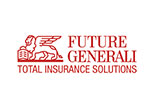Upgrading Your Car Headlights: A Complete Guide
A Complete Guide to Modern Headlight Technology
When it comes to driving at night, having bright and effective Car headlights is crucial for your safety and the safety of others on the road. Upgrading your car's headlamp technology can significantly improve visibility, making your nighttime driving experience much safer and more enjoyable. In this comprehensive guide, we will explore various car headlight upgrades and techniques that can enhance the brightness and beam pattern of your car headlights. From replacing worn-out capsules to upgrading to HID or LED headlights for cars, we'll cover it all. So, let's dive in and discover how you can shine bright on the road.
Table of Contents
- Make Car Headlights Brighter
- What are the types of car headlights?
- Headlight Brightness and Beam Pattern
- Fog light upgrade
- When to Replace Worn-out Headlight Capsules
- When and How to Clean or Restore Headlight Lenses
- Upgrading to HID Headlights
- Upgrading to LED Headlights
- How adding/changing headlights and other accessories impacts car insurance?
- Conclusion
- FAQS
Make Car Headlights Brighter
If you're looking to make your headlights brighter, there are several options to consider. It's essential to strike a balance between aesthetics and practicality when upgrading your car headlights. While brighter car headlights may look cool, they should also improve your night vision without blinding other drivers. Let's explore some of the best ways to achieve brighter headlights:
- Replace Worn Headlights or Capsules: Car Headlights tend to grow dim over time, so replacing old capsules with new ones can result in a brighter beam. Some headlights, such as HID bulbs, can lose up to 70 percent of their intensity before burning out. By replacing worn-out capsules, you ensure a brighter and safer driving experience.
- Upgrade Existing Capsules to Brighter Versions: For a simple and effective upgrade, consider replacing your existing capsules with brighter versions. Aftermarket capsules can be more than 80 percent brighter than your car's original headlights. Keep in mind that brighter capsules often have shorter lifespans, so consider the trade-off between brightness and longevity.
- Clean and Restore Headlight Lenses: Headlight lenses can become foggy or hazy over time due to buildup. Cleaning and restoring these lenses can significantly improve brightness and visibility. Headlight reconditioning kits or car headlight cleaner are readily available and provide a straightforward DIY solution for restoring the clarity of your lenses.
- Upgrade to HID Headlights: HID headlights are significantly brighter than halogen bulbs and can provide a cooler and more intense light output. However, upgrading to HID headlights may require additional wiring work and the installation of ballasts. It's crucial to ensure that the headlight assemblies are compatible with HID technology to achieve optimal results.
- Upgrade to LED car Headlights: LED car headlights offer increased brightness and longevity compared to halogen bulbs. While direct-replacement LED capsules are available, they may not work well in all applications. LED headlights often work best with projector-style assemblies, so it's essential to research your specific make and model before making the upgrade.
What are the types of car headlights?
List of headlights available in 2023 as below:
- Projector headlights
- Halogen headlights
- High-Intensity Discharge (HIDs)
- Xenon
- Bi-Xenon
- Light-Emitting Diode (LEDs)
- LED Matrix
- Halo Rings
- LED Halo Rings
- Cold Cathode Fluorescent Light (CCFL)
- Plasma
Headlight Brightness and Beam Pattern
When considering car headlight upgrades, it's important to understand the concepts of brightness and beam pattern. While brightness refers to the intensity of the light emitted by the bulb, beam pattern determines how the light is distributed on the road. Achieving a balance between brightness and beam pattern is crucial for optimal visibility.
- Understanding Brightness: Headlight brightness is typically measured in lumens, which quantifies the amount of light emitted by the bulb. Higher lumens indicate brighter headlights. However, it's important to remember that brightness alone does not guarantee improved visibility. The beam pattern plays a vital role in directing the light where it's needed most.
- Importance of Beam Pattern: Beam pattern refers to the way headlights distribute light on the road. A well-designed beam pattern illuminates the road ahead without blinding oncoming drivers. Different headlight assemblies use reflectors or projectors to create the beam pattern. Upgrading to brighter bulbs without considering beam pattern can result in a poorly focused or misaligned beam.
Fog light upgrade
Are Fog Lights an Upgrade?
Fog lights are designed to improve visibility in specific driving conditions, particularly in foggy or low-visibility situations. They are positioned lower on the vehicle and emit a wide, low-beam pattern that illuminates the road directly in front of the car. While fog lights can be beneficial in certain scenarios, they may not be necessary for everyone.
When to Consider Fog Lights:
If you frequently drive in foggy conditions or areas with poor visibility, installing fog lights may be a worthwhile addition to your vehicle. Fog lights provide better illumination close to the ground, reducing glare and improving visibility in adverse weather conditions. However, if you rarely encounter fog or low-visibility situations, fog lights may not be a necessary upgrade for you.
When to Replace Worn-out Headlight Capsules
Headlight capsules, or bulbs, gradually lose their brightness over time. While most drivers wait for a capsule to burn out before replacing it, being proactive can offer several advantages. Replacing worn-out headlight capsules before they fail ensures that you always have optimal visibility at night and reduces the risk of sudden headlight failure.
- Signs of Worn-out Capsules: It's important to recognize the signs of worn-out headlight capsules. Dim headlights, yellowing or discoloration, and reduced visibility are common indicators that it's time to replace the capsules. If your headlights appear noticeably dimmer or have a yellowish tint, upgrading to new capsules can significantly improve your visibility on the road.
- The Benefits of Proactive Replacement: By replacing headlight capsules before they burn out completely, you maintain consistent brightness and ensure optimal performance. Proactive replacements also prevent sudden headlight failure, reducing the risk of accidents and improving overall safety. Furthermore, new capsules often provide a crisper and whiter light output, enhancing visibility during nighttime driving.
- Upgrading Headlight Capsules to Brighter Versions: One of the simplest and most effective ways to achieve brighter headlights is by upgrading your existing capsules to brighter versions. This upgrade, often referred to as a drop-in upgrade, involves replacing the original halogen capsules with direct replacements that offer increased brightness.
- Benefits of Upgrading Capsules: Upgrading headlight capsules to brighter versions offers several benefits. These capsules are designed to be the same size and shape as the original bulbs, making installation quick and straightforward. Brighter capsules can significantly improve visibility on the road, enhancing safety during nighttime driving.
- Considerations for Upgrading: When upgrading headlight capsules, it's important to consider the power requirements of the new bulbs. Brighter capsules often have shorter lifespans due to their increased intensity, so it's crucial to weigh the trade-off between brightness and longevity. Additionally, compatibility with your existing headlight assemblies is essential to ensure proper beam pattern and alignment.
- Performing a Pair Replacement: When upgrading headlight capsules, it's recommended to replace them in pairs. Replacing only one capsule can result in an uneven beam pattern, which not only looks unappealing but also hampers visibility. By replacing both high beam or low beam capsules simultaneously, you ensure a consistent and balanced light output.
When and How to Clean or Restore Headlight Lenses
Over time, car headlight lenses can become foggy or hazy due to oxidation, reducing the brightness and clarity of the headlights. Cleaning or restoring the lenses can help improve visibility and make your headlights look brand new. Let's explore when and how to clean or restore your headlight lenses effectively.
- Signs of Foggy Headlight Lenses: Foggy or hazy headlight lenses are characterized by a cloudy or yellowish appearance. This oxidation occurs due to exposure to UV rays, environmental factors, and normal wear and tear. Foggy lenses can significantly reduce the brightness and clarity of your headlights, compromising visibility during nighttime driving.
- Cleaning Headlight Lenses: If your headlight lenses are only mildly foggy, cleaning them may be sufficient to restore their clarity. Start by thoroughly washing the lenses with soap and water to remove any dirt or debris. Next, use a headlight cleaning solution or toothpaste and a soft cloth to rub the lenses in circular motions gently. Rinse off the residue and dry the lenses thoroughly.
- Restoring Headlight Lenses: For heavily oxidized or severely foggy lenses, a restoration kit can provide a more comprehensive solution. These kits typically include sandpaper or abrasive pads of varying grits, a polishing compound, and a protective coating. Follow the instructions provided with the kit to sand, polish, and apply the protective coating to restore your lenses to their original clarity.
- Benefits of Lense Restoration: Restoring your headlight lenses offers numerous benefits. It improves the brightness and clarity of your headlights, enhancing visibility during nighttime driving. Additionally, it rejuvenates the overall appearance of your vehicle, giving it a fresher and more appealing look. Regular maintenance and restoration of headlight lenses can extend their lifespan and ensure optimal performance.
Upgrading to HID Headlights
HID (High-Intensity Discharge) car headlights offer a significant upgrade in brightness compared to traditional halogen bulbs. These headlights utilize a different technology that produces light by passing an electric current through a gas-filled chamber. Upgrading to HID headlights can provide a more intense and cooler light output.
The Advantages of HID Headlights: The primary advantage of HID headlights is their brightness. HID bulbs produce up to three times lighter than halogen bulbs, resulting in improved visibility on the road. The cool white light emitted by HID headlights also provides a more modern and stylish appearance. Additionally, HID headlights have a longer lifespan than halogen bulbs.
Retrofitting vs. Complete Assembly Replacement: Upgrading to HID headlights can be accomplished through two methods: retrofitting or complete assembly replacement. Retrofitting involves installing a ballast and replacing the stock capsules with HID capsules. This method is more cost-effective but may result in a suboptimal beam pattern. Complete assembly replacement involves replacing the entire headlight assembly with HID-specific units. While more expensive, this method guarantees optimal performance and beam pattern.
Considerations Before Upgrading:
Before upgrading to HID headlights, consider the following factors:
- Compatibility: Not all vehicles are compatible with HID headlights. Research your specific make and model to ensure compatibility and identify any additional components or modifications required.
- Legality: Check the local laws and regulations regarding HID headlights in your area. Some jurisdictions have specific rules governing their use, such as requiring headlight washers or automatic self-leveling systems.
- Beam Pattern: HID headlights may require projector-style headlight assemblies to achieve a proper beam pattern. Reflector-style assemblies may create excessive glare and scatter the light.
- Professional Installation: Retrofitting HID headlights can be complex, requiring electrical wiring work and proper alignment. It's recommended to seek professional installation to ensure optimal performance and compliance with regulations.
Upgrading to LED Headlights
LED (Light-Emitting Diode) headlights have gained popularity in recent years due to their increased brightness and longevity. LED technology offers several advantages over halogen and HID bulbs, making it an attractive option for car enthusiasts. Let's explore the benefits and considerations of upgrading to LED headlights.
Advantages of LED Headlights
LED headlights offer several advantages over traditional halogen bulbs:
- Brightness: LED headlights are significantly brighter than halogen bulbs, providing enhanced visibility and road illumination.
- Longevity: LED bulbs have a longer lifespan than halogen bulbs, reducing the frequency of replacements and maintenance.
- Energy Efficiency: LED headlights consume less power than halogen bulbs, resulting in improved fuel efficiency and reduced strain on the electrical system.
- Instant Illumination: LED headlights provide instant illumination when turned on, eliminating the delay associated with other types of bulbs.
Retrofitting vs. Direct Replacement
Upgrading to LED headlights can be achieved through two methods: retrofitting or direct replacement. Retrofitting involves installing LED capsules into the existing headlight assemblies. This method may require additional modifications, such as the installation of ballasts or resistors. Direct replacement involves purchasing LED headlight units designed to fit your specific vehicle model. This method ensures optimal performance and beam pattern without the need for modifications.
Considerations Before Upgrading
Before upgrading to LED headlights, consider the following factors:
- Compatibility: LED headlights are not universally compatible with all vehicles. Research your make and model to ensure compatibility and identify any necessary modifications.
- Beam Pattern: LED capsules may not produce the same beam pattern as the original halogen bulbs. Reflector-style headlight assemblies may require additional adjustments or modifications to achieve a suitable beam pattern.
- Quality and Brand: Choose reputable brands and high-quality LED headlights to ensure durability, reliability, and optimal performance. Poorly designed or low-quality LEDs may not provide the expected brightness or longevity.
- Professional Installation: Retrofitting LED headlights can be complex, involving electrical wiring and proper alignment. For optimal results, it's recommended to seek professional installation or consult an experienced automotive technician.
Likewise, other headlamp technology can be tried and tested
How adding/changing headlights and other accessories impacts car insurance?
Adding/Changing, headlight and other car accessories not only enhance the appearance of a vehicle but also provide additional functionality and convenience. However, many car owners overlook the importance of ensuring these accessories, which can lead to financial losses in case of accidents or theft. The concept of accessories add-on cover in car insurance comes into picture covering the different types of accessories covered, who should consider this add-on, and why it is important to have this coverage.
An add-on cover known as Accessories Add-on including electrical and non-electrical, which provides financial coverage for the accessories fitted in a car, such as head lamp, stereo systems, reverse cameras, LCD TVs, seat covers, alloy wheels, and interior fittings. This cover ensures that in the event of an accident or mishap, the policyholder receives compensation for the damage or loss of these valuable accessories. This will protect your investment and provide financial security in case of any damage or loss. The premiums for car insurance vary depending on various factors, including the car model, accessories, and the insurance provider.
Conclusion
Upgrading your car's headlights is an investment in your safety and driving experience, especially during nighttime or low-visibility conditions. Whether you choose to replace worn-out capsules, upgrade to HID or LED technology, or restore foggy lenses, brighter headlights can significantly improve visibility and enhance your overall driving experience. Consider the compatibility, beam pattern, and legal requirements before making any upgrades, and always prioritize professional installation for complex retrofits. With the right headlight upgrades, you can shine bright on the road and drive with confidence.
FAQS
Q1: Can I switch my car's halogen bulb for an LED one??
A1: Yes, you can. There are several aftermarket LED alternatives that can simply replace a halogen bulb, and you can even locate one with a yellowish tone that performs better in bad weather. To ensure that the beam is identical and doesn't incorrectly scatter and blind other drivers, you must take care to choose one that closely resembles the light source of the halogen lamp. You can always change to a stronger halogen bulb that will emit a considerably brighter light if you can't find an LED with an identical light source.
Q2: Are halogen headlights being old technology and only used on budget vehicles??
A2: No. Halogens are still widely used in current automobiles. Halogens are a feature of some modern Honda City variations. It's not in any way a subpar product. The yellowish beam is a little safer under such circumstances as well, given the quantity of rain we get.
Q3: Are only higher-end vehicles still equipped with LED headlights??
A3: As technology advances, production costs decrease. Since then, the cost of manufacturing LEDs has decreased, and you can now find them on many entry-level devices. Keep in mind that while having brighter headlights is a good idea, it is not the only feature that contributes to a safe vehicle.
Q4: Lasers sounds to be dangerous. Are you sure it is a good fit?
A4: To begin with, you aren't truly gazing at the laser beam. Instead, several high-power diode beams are shot via a number of mirrors in the headlight assembly, reflecting and focusing the light into a yellow phosphor lens. A strong, intense white light produced by the phosphorus is safer for human eyes. You'll be alright.















































